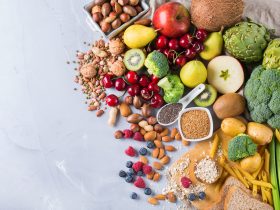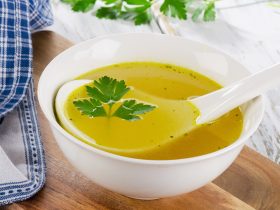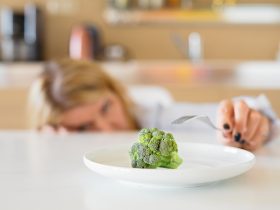Back in the 1990s, Dr. Arthur Agatston, a cardiologist based in Miami, embarked on a mission to transform his patients’ eating habits. His goal was to design a wholesome diet that could shield against severe health conditions such as heart disease and type 2 diabetes. Dr. Agatston’s weight-loss strategy was documented in 2003 under the name “The South Beach Diet,” which has since achieved millions of copies in sales.
This diet derived its name from Dr. Agatston’s field of expertise, as detailed on the South Beach Diet website, and quickly gained traction within the Miami region.
Understanding the South Beach Diet and Its Objectives
The South Beach Diet has a primary focus on cutting out refined carbohydrates, particularly white flour and sugar. Instead, it encourages individuals to reduce carb intake while emphasizing lean protein, low-fat dairy, and nutritious carbs like whole grains, vegetables, and fruits. This approach aims to facilitate weight loss, enhance overall health, and break the cycle of cravings leading to overeating and weight gain.
Distinguishing itself from other low-carb diets such as Atkins, the South Beach Diet takes a unique stance. For instance, while the Atkins diet may suggest consuming 16.7 percent of calories from saturated fat, the South Beach Diet recommends a lower range of 10 to 15 percent of calories from saturated fat, while also promoting the consumption of healthier fats.
Moreover, the South Beach Diet doesn’t completely shun certain types of carbohydrates. According to Natalie Stephens, RD, from the Ohio State University Wexner Medical Center, the diet ultimately promotes a balance that includes complex carbs such as whole grains, beans, and lentils, along with fruits. She highlights that following the original recommendations aligns the South Beach Diet with scientifically supported dietary patterns like the DASH diet. This pattern emphasizes vegetables, fruits, nuts, lean meats, plant-based oils (excluding coconut oil), and low-fat dairy. These approaches have demonstrated health benefits like reducing cholesterol levels and managing high blood pressure.
Learning how the South Beach Diet works
A key focus of the South Beach Diet is managing hunger by proactively consuming meals before cravings arise. To achieve this goal, the diet is divided into three distinct phases:
- Phase 1 (Two Weeks): This initial phase spans two weeks and serves to “reset your body.” Its purpose is to enhance fat burning, boost metabolism, and diminish cravings for sugar and starch.
- Phase 2 (Steady Weight Loss): In this phase, the emphasis is on consistent weight loss. You gradually introduce good carbohydrates into your diet to support your weight loss journey.
- Phase 3 (Weight Maintenance): The final phase focuses on maintaining the achieved weight without resorting to deprivation or experiencing hunger. It teaches you how to sustain your new weight over the long term.
By following this structured approach, the South Beach Diet aims to help individuals effectively manage their hunger, control their weight, and achieve lasting results.
“The phases serve as a catalyst for initiating weight loss,” explains Stephens. “Witnessing early positive results can boost motivation to stay committed to the program.” She emphasizes that these phases also facilitate the transition to a new lifestyle. Phase three is designed as a lifelong commitment rather than a temporary “diet.”
An in-depth look at the South Beach Diet’s Phase 1
Similar to all the phases in the South Beach Diet, phase 1 encourages three meals, two snacks, and a dessert each day. However, this initial phase is the most restrictive when it comes to food options. Your diet during this phase mainly consists of lean protein sources, high-fiber veggies and legumes, nuts, certain low-fat dairy items, and beneficial unsaturated oils such as olive oil.
Phase 1 has a duration of two weeks.
The objectives of this phase encompass breaking free from unhealthy eating habits, simplifying your dietary choices, and curbing cravings by stabilizing your blood sugar levels.
“To manage overeating, it’s crucial to stabilize blood sugar and insulin response through regular meals every few hours. Opting for a high-fiber diet comprising whole grains, fruits, vegetables, and heart-healthy fats plays a key role,” explains Barbara Schmidt, RDN, a New Canaan, Connecticut-based dietitian in private practice.
Consuming excessive refined carbohydrates in a single sitting, like indulging in a large bagel, can disrupt your blood sugar control. This often leads to quicker feelings of hunger and a higher likelihood of succumbing to unhealthy food choices, as highlighted by Schmidt. She further emphasizes that the South Beach Diet generally excels in curbing the consumption of these problematic carbs compared to other diet plans.
Phase 1 South Beach Diet Sample Menu
Explore this recommended menu for phase 1, as provided by the South Beach Diet website: (4)
Breakfast: South Beach Complete shake
Snack: Fresh dill and lemon juice-seasoned plain Greek yogurt, accompanied by celery sticks and cherry tomatoes
Lunch: Grilled chicken, half an avocado, and steamed broccoli
Snack: South Beach Diet Peanut Chocolate Bar
Dinner: Baked salmon, sautéed cabbage, and garlic, paired with white beans
Evening Snack: Almonds
Discovering the South Beach Diet’s Phase 2
During phase 2 of the South Beach Diet, you’ll introduce whole grains and fruits to your eating plan. This phase will be maintained until you achieve your desired weight loss goal. These carb-rich foods are full of fiber and have a low glycemic index, which means they provide longer-lasting energy and help stabilize blood sugar levels, according to Susan Kraus, RD, a clinical dietitian from New Jersey.
As per the South Beach Diet website, phase 2 allows you to include: (5)
- 1 serving of fruit daily, such as a small banana, 2 medium plums, or a cup of mixed berries (like strawberries and blueberries)
- 1–2 servings of starchy vegetables per day, such as ½ cup of winter squash or sweet potato
- A selection of good carbohydrates, like 3 cups of air-popped popcorn or 1 small tortilla
However, certain foods are still best avoided:
- Refined carbohydrates like white bread, white pasta, and rice cakes
- White potatoes
- Fruit juices
- Sweetened dried fruits
- Sugary treats such as ice cream, honey, and jam
A Phase 2 Sample Menu from the South Beach Diet
Breakfast: Enjoy a breakfast pita filled with spinach, eggs, and feta cheese, accompanied by vegetable juice, and a cup of tea or coffee.
Snack: Treat yourself to a variety of vegetables served with a dip made from cilantro and pesto.
Lunch: Savor a curried turkey and greens salad for a flavorful midday meal.
Snack: Prepare delicious apple and peanut butter sandwiches as a satisfying snack.
Dinner: Delight in an edamame appetizer, followed by a Louisiana-style shrimp and rice dish, and baked tomatoes topped with Parmesan cheese.
Dessert: Indulge in a South Beach Diet–style tiramisu to satisfy your sweet cravings.
How Phase 3 of the South Beach Diet Works
Phase 3 of the South Beach Diet is designed to be a lifelong approach. This phase has no set duration and focuses on teaching you how to maintain your weight loss and a healthy eating pattern for the long term. The goal is to prevent weight regain and the need for further dieting.
If you’re seeking recipe ideas and variety, Natalie Stephens suggests exploring DASH diet cookbooks, as these two diets share many similarities.
A Sample Phase 3 Menu from the South Beach Diet
For a typical day of eating during phase 3, Natalie Stephens provides the following example:
Breakfast: Start with mini crustless quiches made with eggs, peppers, onions, and cheese, served with a slice of whole-grain toast like Ezekiel bread, a cup of berries, and a cup of black coffee or tea.
Lunch: Enjoy a salad with greens, topped with salmon or chicken and dressed with olive oil and vinegar.
Snack: Indulge in Greek yogurt paired with fresh berries.
Dinner: Create a balanced plate featuring roasted vegetables like zucchini, squash, and red onion, along with a modest 4-ounce serving of lean meat such as salmon, chicken, or beef tenderloin. Add 1/3 cup of a hearty grain like farro, quinoa, or barley.
Dessert: Treat yourself to either mascarpone cheese or Greek yogurt combined with peaches, and garnish with slivered almonds and a sprinkle of cocoa powder.
Top Sources for South Beach Diet Support
For the latest and most reliable information about the South Beach Diet, head to the official South Beach Diet website. Here, you’ll discover a wealth of valuable resources and tools to assist you, such as:
- Support Communities: Engage in support groups tailored to the South Beach Diet, connecting with others on the same journey.
- Extensive Recipe Collection: Explore hundreds of recipes designed to align with the South Beach Diet principles.
- Convenient Shopping List Generator: Utilize a program that generates your personalized shopping list, streamlining your grocery shopping experience.
In addition, consider exploring “The South Beach Diet Supercharged” book. This comprehensive resource not only provides insights into additional foods and recipes but also offers workout routines that complement the diet plan.
Potential Advantages of Sticking South Beach Diet
The South Beach Diet offers several potential benefits that appeal to individuals seeking a straightforward approach to weight loss and improved health. Here’s a breakdown of the possible advantages:
The plan is designed with simplicity in mind, minimizing the need for extensive food measurements, especially in the initial phases. Phase 1’s strictness can yield significant weight loss, with some individuals shedding 8 to 12 pounds within the first two weeks. Additionally, this phase may effectively reduce cravings for refined carbs, promoting healthier eating habits.
The South Beach Diet recommends foods that are not only conducive to weight management but are also heart-healthy. Dietary choices can contribute to better heart health and overall well-being.
By regulating blood sugar levels, the diet can offer potential benefits for individuals dealing with or at risk of type 2 diabetes. The diet’s emphasis on fiber-rich foods aligns with maintaining a healthy weight and promoting satiety, ultimately aiding in weight management and overall health.
The South Beach Diet’s restriction of carbohydrate intake, particularly processed carbs, can have positive effects on health. Research suggests that reducing processed carb consumption may lead to improved blood glucose levels and lower insulin levels, contributing to better overall health.
Ultimately, the South Beach Diet’s straightforward approach, heart-healthy recommendations, and focus on managing blood sugar and processed carb intake make it an appealing option for those seeking tangible health and weight-related benefits.
Potential Drawbacks of the South Beach Diet
While the South Beach Diet may suit certain individuals, it might not be a perfect fit for everyone due to some potential drawbacks. Here are key considerations to keep in mind:
One limitation of the diet is its potential to provide inadequate calcium, which is particularly concerning for women at risk of osteoporosis. Strong bones are crucial for overall health, and the diet’s calcium recommendations may fall short. The suggested 2 cups of dairy per day may not be enough to ensure optimal calcium intake. To address this, incorporating calcium-rich foods like leafy greens is advised, and Schmidt suggests adding a calcium supplement with vitamin D to your routine.
The strictness of phase 1 could pose challenges, especially when individuals are not at home. The absence of specific portion recommendations for various food groups might lead to overeating or inadequate consumption. This strict phase may require careful planning to ensure balanced and satisfying meals.
Phase 1’s exclusion of fruits and starches may limit dietary variety and potentially make it less enjoyable for some individuals. However, this restriction is temporary and lasts only two weeks.
Some studies have not conclusively proven the superiority of the South Beach Diet compared to other popular diet plans. For instance, a review conducted in 2014 compared the effectiveness of various diets, including the South Beach Diet, and found no significant advantage of one plan over the others in terms of weight loss. Among these, the Weight Watchers diet appeared most effective at reducing weight after 12 months.
Considering these factors, it’s important to weigh the potential benefits and drawbacks of the South Beach Diet to determine if it aligns with your health goals and lifestyle preferences. Consulting with a healthcare professional or registered dietitian can provide personalized guidance.
Potential Immediate and Long-Term Effects of the South Beach Diet
When embarking on the South Beach Diet, you’re likely to experience various changes in your health and weight throughout each phase of the program.
In the initial phase, the diet’s strictness often yields quick results. Barbara Schmidt, RDN, explains, “The first phase tends to bring about immediate outcomes due to its rigorous nature. As you reintroduce foods, weight loss might slow down slightly, but it should continue steadily as long as you adhere to the plan’s recommendations.”
The South Beach Diet is designed to be a lifelong approach to eating, with phase 3 serving as the maintenance period. By this stage, you have acquired healthy eating habits. While occasional indulgences, like a slice of cake, are permissible, the principles learned in phases 1 and 2 help prevent significant deviations from the plan.
Schmidt highlights the diet’s nutritional quality, stating, “It promotes consumption of the right types of foods. Over the long term, maintaining the diet on weekdays while allowing some flexibility on weekends can help you sustain your results. Despite its stricter nature, the diet offers an array of delectable recipes.”
By embracing these considerations and the plan’s gradual progression, you can harness the short- and long-term benefits of the South Beach Diet for improved well-being and sustainable weight management.















Find Us on Socials